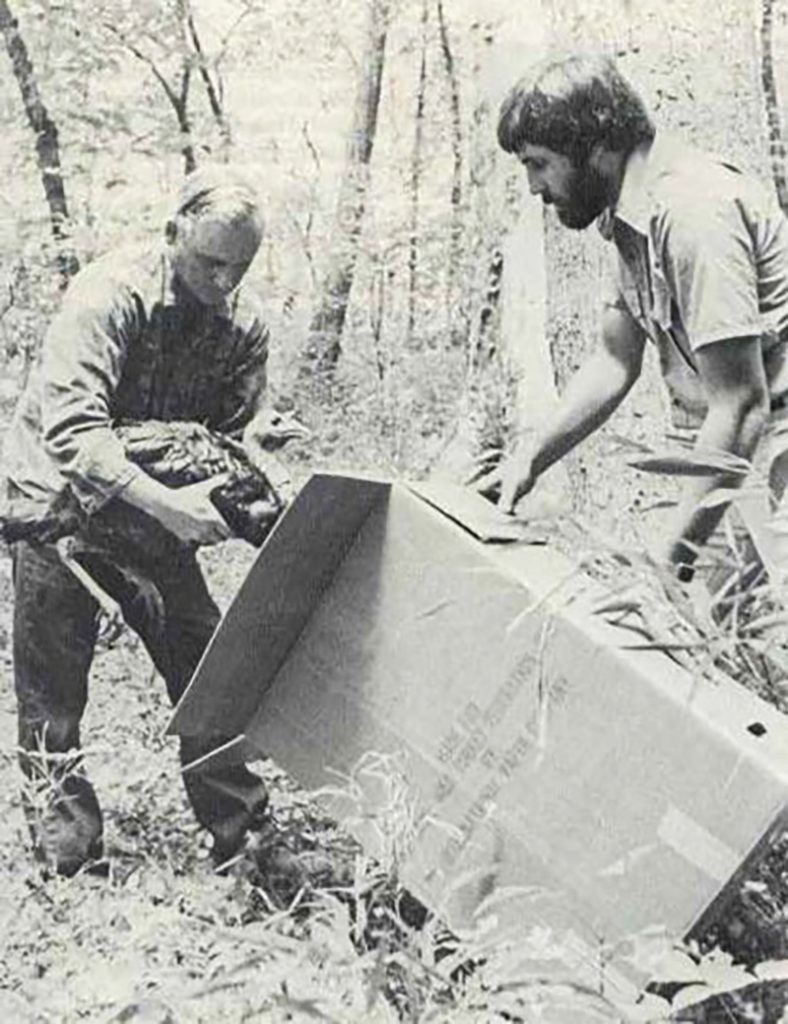Working for the Wild Turkey: NWTF’s Technical Committee
The wild turkey’s success is the culmination of decades of collaboration, novel research and interstate partnerships, and nowhere else are these attributes more obvious than within the efforts of the NWTF Technical Committee.
The restoration of the wild turkey is touted as the greatest conservation story in America (and rightfully so), but this historic accomplishment did not happen overnight, nor did it happen due to one person or agency. Instead, the wild turkey’s success is the culmination of decades of collaboration, novel research and interstate partnerships, and nowhere else are these attributes more obvious than within the efforts of the NWTF Technical Committee.
The NWTF Technical Committee is comprised of wild turkey biologists from nearly every state natural resource agency who act as liaisons between the NWTF and state natural resources agencies to effectively manage wild turkey populations and deliver conservation that benefits turkeys in a particular state.
Originally assembled in 1976 with just 35 states represented, the Technical Committee has been a part of the NWTF mission almost since the NWTF’s inception (1973), and it has grown to include 49 states. The Technical Committee continues to be the leading force in bolstering populations, creating hunting opportunities and addressing wild turkey management challenges throughout the U.S.
“The interstate trapping and transferring of wild turkeys, the design of the boxes used, the introduction of rocket nets, novel research that guided successful management — when we think of all the iconic moments in the wild turkey success story, they are almost always the result of the NWTF Technical Committee’s efforts,” said Mark Hatfield, NWTF’s director of conservation services. “In addition to all the success over the years, one of the Technical Committee’s greatest gifts was the research culture of wild turkey management they established.”
Wild turkey biology and management is somewhat of a specialized field; biologists who are as passionate about it as those on NWTF’s Technical Committee are few and far between. The Technical Committee streamlines communication between these biologists nationwide so they can better share issues they are facing, as well as solutions and new findings.
This transcontinental group of biologists paved the way for wild turkey ecology research. In the early years, the NWTF awarded about $10,000 a year to research that resulted from the NWTF Technical Committee (that was a nice chunk of change back then). Since that first research grant in 1978, the NWTF, aided by the Technical Committee, has contributed over $8 million to wild turkey studies.

“There is a direct correlation between the Technical Committee’s research activity and the national wild turkey population,” Hatfield said. “Generations of turkey biologists have contributed to the success of the wild turkey through the Technical Committee, and with population fluctuations being observed across the country, the Technical Committee’s role is just as important today as it was in the 70s, 80s, 90s and 2000s.”
“With so much current anxiety about the status of wild turkeys, seemingly coming from across their range, national-level collaboration just makes sense,” said Adam Butler, the Wild Turkey Program coordinator for the Mississippi Department of Wildlife, Fisheries, and Parks and current Technical Committee co-chair. “The NWTF Technical Committee provides one of the few opportunities for us to do that in a meaningful way. Having such an effective outlet to address shared challenges is really a force multiplier for conservation.”
In concert with addressing declines, NWTF Technical Committee members are investigating barriers for managing turkeys, maintaining a positive public view of hunting, researching landscape scale conservation practices, and managing habitats and turkey populations on a much larger scale.
“Our Technical Committee representatives are the authorities in their state and are entrusted to the management of the wild turkey, and because of our close relationship with them, they help our state chapters allocate Super Fund dollars to best benefit the wild turkey,” Hatfield said.
With almost five decades under its belt, the NWTF Technical Committee has addressed population lows in the early 20th century, saw historic highs in the early 2000s and is investigating regional differences we are beginning to witness in the 2020s. It’s safe to say this dedicated bunch is a major reason why wild turkey restoration is America’s greatest conservation story, and they are working to ensure it stays that way.
